 |
The Sikes Historic |
 |
 |
The Sikes Historic |
 |
| Links: Zenas Sikes' Ancestors | The Sikes of Bernardo | SDRP History of Sikes | RB History Timeline | IS Arch. Photographs | Mark Sauer Const. Restoration | |
The Sikes Adobe Historic Farmstead is located at 12655 Sunset Drive in Escondido, California. Volunteer docents are on hand Sundays from 10:00 AM to 1:30 PM to lead free guided tours of this 150 year old house. Tours last approximately 45 minutes.
This website has been prepared by the Docents. For the ancestors of Zenas, click on the Ancestors link, above. Other links are shown for a scholarly review of the family, the San Dieguito River Park, and the home's restoration. Below is an excellent video of the 2003 restoration.
| The Creamery Restoration
"The Creamery/Cooling House project is underway, and I am requesting that you vote on an expenditure of Friends of Sikes Adobe funds to pay for the following:More about the creamery restoration with photographs: What's Churning At Sikes |
For information about the Sikes' property before 1872, see Mexican Land Grants and Rancho San Bernardo.
(9) Zenas J. Sikes Jr. (1828)Zenas was born on 28 December 1828 in Westhampton, Massachusetts to Doctor Zenas Sikes Sr. and Nancy Janes. His middle initial is per his daughter Lottie's death certificate. His family removed to Michigan in about 1837, when Zenas was 9 years old. He had six brothers: Orendo Montague, Loring Wright, Pliny Parsons, Samuel Janes, Charles Lonson Wells, and John Truair. There was also a sister, Lucinda Graves.
In March 1850, Zenas, aged 22, and three of his brothers, Samuel, Charles, and Loring, drove 2 wagons and 5 yoke of oxen from Michigan to Sacramento, California, the trip taking 5 months. They probably followed the California Trail, which ran from western Missouri, up the valleys of the Platte, North Platte, and Sweetwater rivers to the South Pass, in Wyoming, the lowest point on the Continental Divide between the Central and Southern Rocky Mountains. The Mormon Trail split off here, going down to the Salt Lake. The California Trail continued on into southern Idado and northern Nevada, then picking up the Humbolt and Truckee rivers into northern California. The boys settled in Santa Clara county, south of San Francisco Bay.

In the 1852 census of Santa Clara county, California as Samuel Sykes, 28, Zenas Sykes, 24, L. [Loring] Sykes, 28 (it should be 33), Emma Sykes, Loring's wife, 24, Charles D. Sykes, Loring's son, 4, and Charles L. W. Sykes, 21. Perhaps they were all living together. The boys are all shown as born in Massachusetts. Emma was born in Canada and her son was born in Michigan. I don't know if Emma and Charles D. came along in the 'wagon train' in 1850 or later via sea.

Zenas had claims in both the valley, near San Jose, and in the nearby mountains. While the former sounds like a farm, could the latter be a mining claim? This was probably near Los Gatos creek in the Santa Cruz mountains, on the west side of the valley, where his future father-in-law had property.
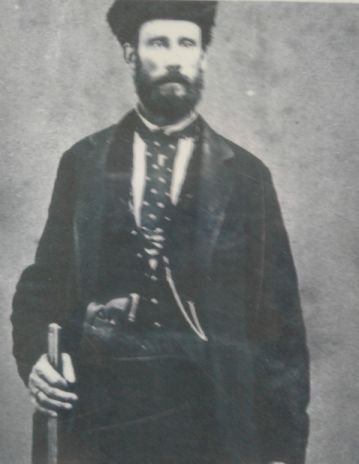
Zenas' brother, Samuel, stayed in California for just two years, then returned to Michigan by way of Nicarauga, a convenient place to cross the isthmus of Panama. He was listed in the 1870 census of Keeler, Michigan with a wife, Lucinda, 32, and children, Arlie, 10, Allison, 8, and Burt, 5.

On 3 July 1853, Zenas Sikes and Eliza M. Burrell married in Santa Clara county, California.
"Marriages . . . On the 3rd of July [1853], by the Rev. Mr. Yager, Mr. Zenas Sikes, Jr., to Miss Eliza M. Burrell, all of Santa Clara county" - from the Daily Alta California newspaper of 9 July 1853.

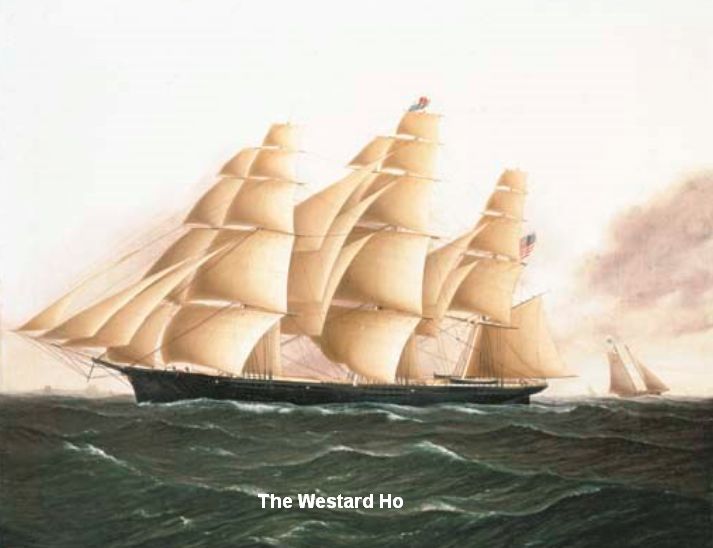
"The celebrated 'extreme' clipper Westward Ho was designed and built by the famous Donald McKay at his East Boston yards and launched on 24th September 1852. Ordered by Sampson & Tappan of Boston for the California and Far Eastern trades, she was registered at 1,650 tons (American) and measured 220 feet in length with a 40 foot beam. Her superbly tailored lines were soon remarked upon wherever she went and although somewhat beamier than most of McKay's early vessels, her ends were extremely sharp and she carried practically no ornamentation except for her figurehead of a full-length native Indian warrior mounted upon a flowered pedestal.
Leaving Boston on 16th October 1852 under Captain Joseph P. Johnson, her maiden voyage was to San Francisco and she made port on 31st January 1853 after a good run of 107 days." - from Christies.com
| Eliza's father: Lyman J. Burrell
"LYMAN J. BURRELL, deceased, was born in Massachusetts, September 5, 1801. Both of his parents were natives of Massachusetts. His father, Jabez Burrell, was one of eight sons and three daughters. Lyman lived in Massachusetts until he was twelve years old, when his father removed to the Western Reserve and settled in Sheffield, Lorain County, Ohio. His father was a pioneer, and took up and cleared his land. Lyman had a farm in Sheffield given him by his father, which he cultivated. He married [Mary Stillman on 15 December 1823 in Cuyahoga, Ohio]. His wife died six or seven years afterward [12 August 1837]. He was married again, on 29 October 1839, to Clarissa Wright, a native of Connecticut. Previous to this he went to Elyria, the county seat of Lorain County, and was twice elected County Treasurer on the Whig ticket. [he later married Lucy Mix Wright in 1864 and Philomela Thurston Reed in 1876] Lyman appears to have moved to San Diego, or at least visited there, circa 1872. "A communication from Lyman Burrell, San Diego, was read. Mr. Burrell stated that he had been looking for a good location for a vineyard and fruit orchard, and had met with gratifying success. The land near San Diego was well adapted for the cultivation of the grape without irrigation, and he advised farmers looking for lands to come down there." - from the San Jose Mercury News of 21 July 1872Lyman was buried at the Mission City Memorial Park in Santa Clara. His tombstone indicates he died on 2 June 1884. Burrell, California was an early settlement in Santa Cruz County near the summit of the Santa Cruz Mountains. It was named for Lyman John Burrell, who settled there in the early 1850s. There was a Burrell School, which was later abandoned. Today, the site, including the restored historic school building, is home to the Burrell School Winery and Vineyards. 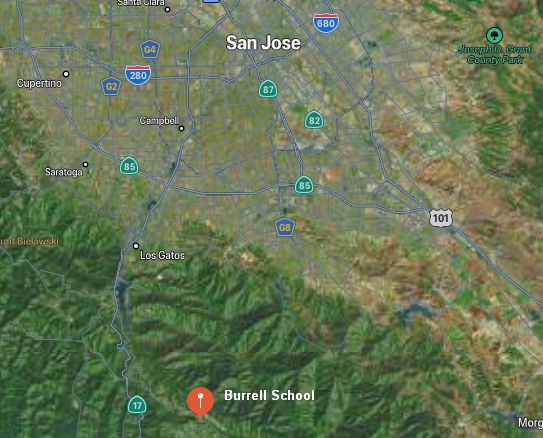
Lyman John Burrell and Mary Stillman had the following child,
Lyman John Burrell and Clarissa Wright had the following children,
|
The following is from an article about Clarissa Burrell, Eliza's step-mother.
"Eliza and Mr. Sikes (he is never referred to by his given name in Clarissa's letters) moved to the Summit* area with their three-week-old baby [this was Ida] in 1854. Clarissa and the children met the moving party, led by Lyman and daughter Martha, as they entered the Los Gatos Creek canyon with the wagonload of household goods. Unfortunately, a recent forest fire had burned a bridge over one of the ravines, and they were forced to abandon the wagon, transfer the goods onto the horses, and follow the old, steep trail that crossed and recrossed the creek. Clarissa carried her tiny granddaughter on "old sure footed Kate," the family horse. "Mr. Sikes carried the babe in his arms over the roughest parts of the road (he was walking). We have quite a time of it," she continued, "but we arrived at the home before dark, and with much less fatigue than one would imagine. Indeed, we were all quite well the next day, and I commenced washing and cleaning." - from a history of Clarissa Burrell by Joan B. Barriga in Marlene Wiley's Mountain History Archive.See also The Burrell Letters for Clariss Wright Burrell's diary for a description of the voyage out on the WESTWARD HO and life in the Santa Cruz mountains.
Sometime after Zenas' daughter, Eva, was born in 1856 Zenas and Eliza went back to Michigan, where their son, Harry A. Sikes, was born on 24 June 1858. I assume this trip was to the home of Zenas' father, Dr. Zenas Sikes Sr., who would have been 67 years old at the time. His mother, Nancy Janes Sikes, was 68. Zenas and Eliza returned to California the next year. This was in company with James J. and Romelia Allen:
"In 1859 with her brother, James J., she [Romelia Allen] crossed the plains in an ox-team train with Zenas Sikes and his wife to California. Romelia remained with Mr. and Mrs. Sikes at Alviso [now a suburb of San Jose] for a year and then she and her brother came to the Burrell ranch at the Summit of the San Cruz Mountains, for a year . . ." - from the "History of Santa Clara County, California" by Eugene Taylor Sawyer
In the 1860 census of Fremont township*, Santa Clara county, California as Z. Sikes, a 31 year old farmer. Living with him were his wife, Eliza, 26, and children, Ida, 6, Eva, 4, and Harry, 2. Ida and Eva are shown as born in California while Harry is shown as born in Michigan. Zenas & Eliza's companions on their trip back from Michigan, James Allen, a 25 year old ship carpenter, and his sister, Romelia Allen, 18, were also living with them as was a 34 year old farm laborer also lived with the Sikes. Brothers Loring and Charles were also listed, in Redwood and Fremont townships, respectively.
* Fremont township is bounded on the north by San Mateo county and a portion of the bay of San Francisco; on the east by Alviso and Santa Clara townships; on the south by Redwood township, and on the west by San Mateo county.
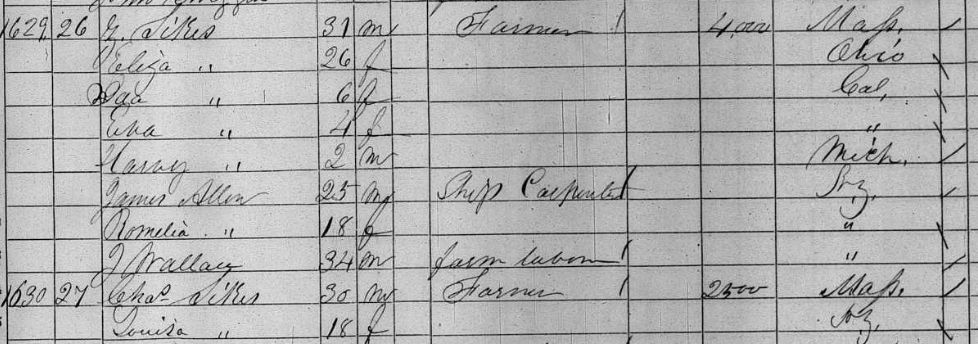
Zenas' son, Harry, wrote to his niece, Gertrude, and made mention of Zenas' service in the Home Guard during the Civil War. During this time period Zenas would have been 33 to 37 years old, a little old for campaigning. A snippet of that letter,
"My father was a member of the Home Guards and may have been captain, but I do not know. I have a photo of him and a part of the company as they stood in front of their tents."The use of the term 'Home Guards' was not current during the Civil War, but was around the time of World War I, when this letter may have been written. Harry's thought that Zenas may have been a Captain comports with the use of the title in Eliza's obituary,
"Mrs. Sikes had been a resident of San Diego county since 1881 and with Captain Sikes came to California in 1853. Born in Mobile, Ohio in 1834, she grew to young womanhood there and in 1853 was married to Captain Sikes."However, I expect Zenas was more likely a Private and the title of Captain more a courtesy. I don't see Zenas in the "Records of California Men in the War of the Rebellion, 1861 to 1867," but a Private Charles Sykes, possibly Zenas' brother, was in Company F, of the 7th Infantry Regiment. Below is a photograph of Zenas in uniform.
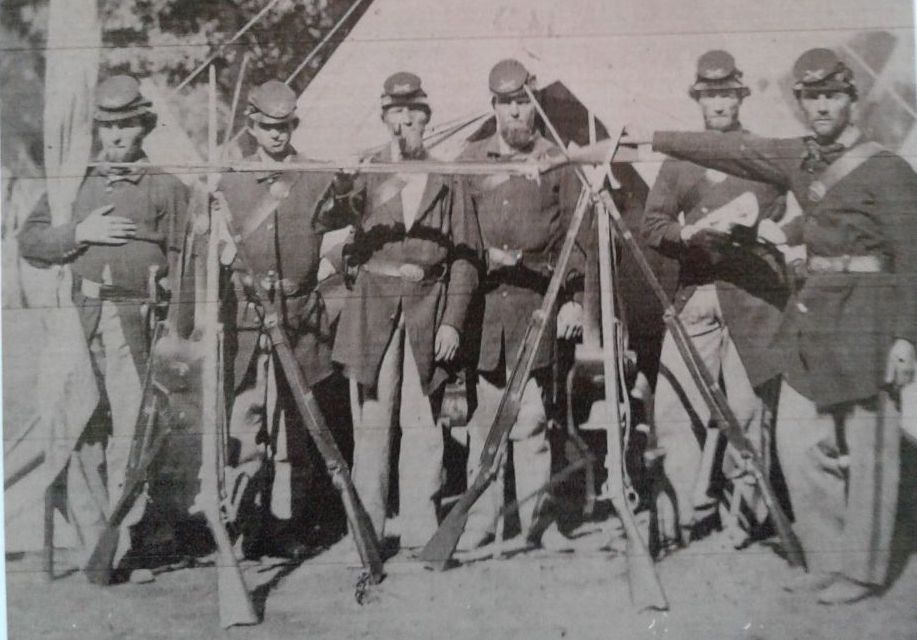
The soldiers, above, are dressed in fatigue uniforms and wearing the 1861 model Forage cap, known as a 'bummer.' The guns look like Springfield Model 1861s. These were .58 caliber rifles that fired a Minie ball. They were the most common infantry weapon of the war. By the way, a Minie ball was not a ball; it was conical in shape, well adapted to the barrel's rifling. I don't know what unit Zenas was in, but it 'may' have been the Santa Clara county [Home] Guard.

| Santa Clara Guard
Known as the Santa Clara Light Infantry, Company F, 1st Artillery Regiment, 2nd Brigade, California Militia (CM) 1861-1864. Later redesignated as the Santa Clara Guard, Company H, 5th Infantry Regiment, 2nd Brigade, California Militia (CM) 1864-1866.
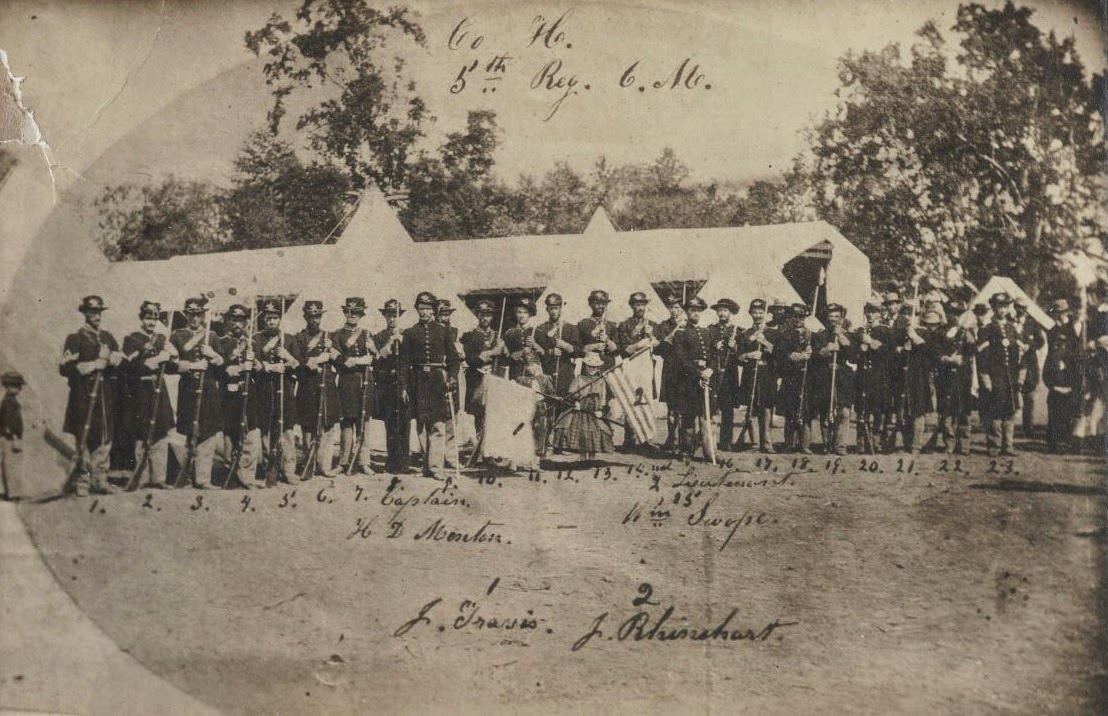 Santa Clara Guard, Co. H 5th Reg. C.M., in Dress Uniform, circa 1864 The soldiers, above, appear to be wearing the knee-length dress coat and the 'Hardee' hat which was regulation dress hat for enlisted men. The group pictured is relatively small so this is most likely just the leadership of the company, the officers, non-commissioned officers, and, perhaps, corporals. Captain Hugh Menton and Lieutenant William Swope officered the company in 1865. |
 Zenas was an inventor. At an Industrial Fair in San Francisco the following was listed,
Zenas was an inventor. At an Industrial Fair in San Francisco the following was listed,
"Roller and Grain Mill, Z. Sikes, of Santa Clara." - from the Daily Alta California of 6 September 1864A roller grain mill uses a combination of rollers to grind grain. The article to the right, of 16 September 1864, was less appreciative of Zenas' investion. At the San Francisco Mechanics Fair the following was listed,
"Z. Sikes, roller grain mill--second premium" - from the "California Farmer and Journal of Useful Sciences" of 29 September 1865Second premium referred to an award, i.e. not the best, but perhaps second place. In 1866 Zenas Sikes was the sole owner of the patent for a Roller Grain Drill, a seed planter - from the San Jose Mercury News of 20 December 1866. The drill was manufactured by H.H. & J.J. Roper of Santa Clara and it was noted that it had been invented by a "practical farmer, who well knew the wants of agriculture . . ." The latter was apparently Zenas. A grain drill is a machine used to plant small grain in evenly spaced rows, or drills. The machine forms a series of shallow trenches into which it drops the seeds at a pre-selected distance from each other and then covers them with a uniform layer of soil.
Zenas Sikes, a 34 year old farmer of Santa Clara township, was listed in the California Great Register of voters with a date of registration of 24 July 1866.
On 8 December 1868 Zenas bought 2400 acres, 1/2 a league or 1/8th of the San Bernardo rancho, from Charles Wetmore for $2500. Wetmore was a real estate speculator newly arrived from San Francisco. His first venture was the sale of the rancho. Omar Oaks and Sylvester Lyman, both like Zenas, from Santa Clara county, had purchased 1/4 and 1/2 portions of the rancho on 5 December. Zenas may have been spurred to move to San Diego based on the real estate promotion of Alonzo Horton, who was developing San Diego's present-day downtown and needed new farmers to support the increased population.
| The La Canada de San Bernardo Rancho Grant
In 1842 the governor of Alta California, Juan Bautista Alvardo, granted Jose Francisco Snook two leagues of land and, in 1845, Governor Pio Pico granted an additional two leagues, for a total of 17,763 acres, in what became the Rancho La Canada de San Bernardo (Ranch of the Valley of the San Bernardo river). Snook was an Englishman, originally named Joseph; he changed his name on becoming a Mexican citizen and a Catholic in 1833. He was a sea captain who traded up and down the California coast and on into Mexico and Peru. In 1837 Snooks had married Maria Antonia Alvarado, the daughter of Juan Bautista Alvarado, a cousin of the governor of Alta California [strangely of the same name, Juan Bautista Alvarado] and grantee of Rancho Rincon del Diablo, now Escondido. The couple initially made their home on the plaza in Old Town. The rancho to the south, Rancho Los Penasquitos, was at this time owned by Francisco Maria Alvarado (another cousin?). Snooks was a stock breeder, running cattle, sheep, horses, mules and oxen. The stock bore the Snook J-S brand. His casa, while its location is not known, was probably to the north of the Sikes adobe, near where his father-in-law lived. Recent archaelogy places it within today's Kit Carson park. In 1846, during the Mexican-American War, the American Army of the West, commanded by General Stephen Kearny, stopped at the Snooks casa to seize supplies. Both Joseph and Maria were absent. Just before this time Snooks had arrived in San Diego bay in his ship 'Juanita,' where it was seized by the American Navy ship 'Cyane.' Snooks died in 1848 and his widow married Henry Clayton, an American with the Mexican boundary survey. Joseph's brother John came out from England, but died in 1852. The Snooks had no children. In the peace treaty that ended the Mexican-American War the US Government promised to respect the property rights of the Californio grantees. However, since few of the latter could show an adequate survey they were subjected to long, expensive legal battles to prove their claims. A decline in cattle prices and droughts in the early 1860's further squeezed the grantees resulting in many of the ranchos being sold off and subdivided. Maria died in 1862, terminating her life interest in the rancho. In 1867 Snooks' heirs in England sold the rancho to Thomas Fox who was acting for James McCoy, a sheriff and state senator from San Diego. On 5 December 1868 McCoy sold a quarter share of the property to Charles Wetmore, a half share to Sylvester Lyman, and a quarter share to Omar Oaks. Three days later Zenas Sikes bought 1/2 of Wetmore's interest.  Map of the Rancho San Bernardo Mexican Land Grant - from the Rancho Bernardo Historical Society The map is oriented with East at the top. Down the center of the map is the Canada y Arroyo de San Bernardo, today's San Pasqual valley and San Dieguito river, to the left is [Rancho] Rincon del Diablo, today's Escondido, and to the right is Canada y Arroyo de Paguay, today's Poway See also The Rancho San Bernardo. |
On 30 March 1869 Charles Wetmore, Omar Oaks, Isaac Lankershim, James Hill, and Sylvester Lyman legally conveyed 2402.5 acres located on the north side of the San Dieguito River (San Bernardo River) to Zenas Sikes - from Deed Book 5, San Diego County Recorder's Office (1869), 261. I don't know why Lankershim and Hill were included in this document. Lankershim, a major California land owner, bought the 48,800 acre El Cajon rancho in 1868.
Zenas visited San Diego, and the newly purchased farm, in 1869, just two months after the title for the land was conveyed to him.
"Passengers. San Diego and Way Ports--Per Sierra Nevada--Captain O H Bainbridge, U S N, and wife, T L Meyer and son, . . . Z. Sikes . . . and 47 others." - from the 4 July 1869 Daily Alta California newspaper of San FranciscoWhat did Zenas do in San Diego? It would make sense for him to inspect his new property. He may have made preparations for his family's move to Bernardo and perhaps contracted for the adobe to be built. There is no evidence that he did this, but it makes sense that he had a purpose for his visit.
The sidewheel steamer Sierra Nevada, built in 1851, operated along the California coast. It was subsequently lost in October 1869 having struck a reef in a fog, but without the loss of life.
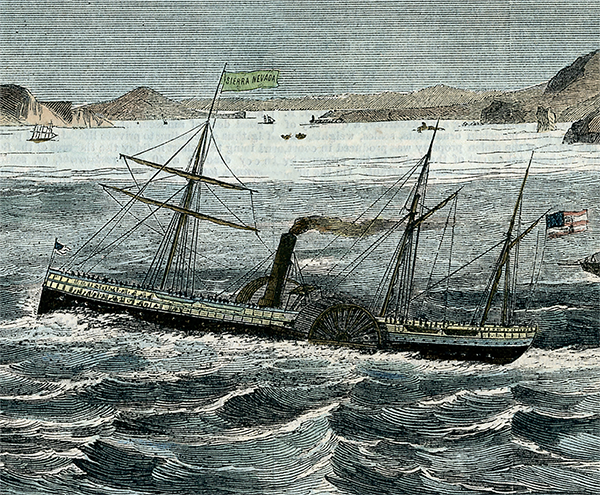
Zenas and family were still living in Santa Clara in the first half of 1870. In the 1870 census of Santa Clara township, Santa Clara county, California as Zenas Sykes, a 47 year old farm laborer. He had real estate worth $4,000. The census was enumerated in June 1870. Living with him were his wife, Eliza M., 42, of Ohio, and his children, Ida, 16, Eva, 14, Harry A. [shown this time as born in California], 12, Kittie A., 10, Lotta, 8, and Edward, 6. All the Sikes' children were shown as born in California, including Harvey. A Mathew Burrell, a 20 year old Day laborer, of Ohio, also lived with them, presumably his brother-in-law. Brothers Loring and Charles were also listed, in Santa Clara (a farm laborer with real estate worth $3,000) and San Jose (a hack driver with no real estate) respectively.
- Harry A. Sikes is shown as born in Michigan in the 1860, 1880, 1930, and 1940 censuses, and in the California Great Registers.
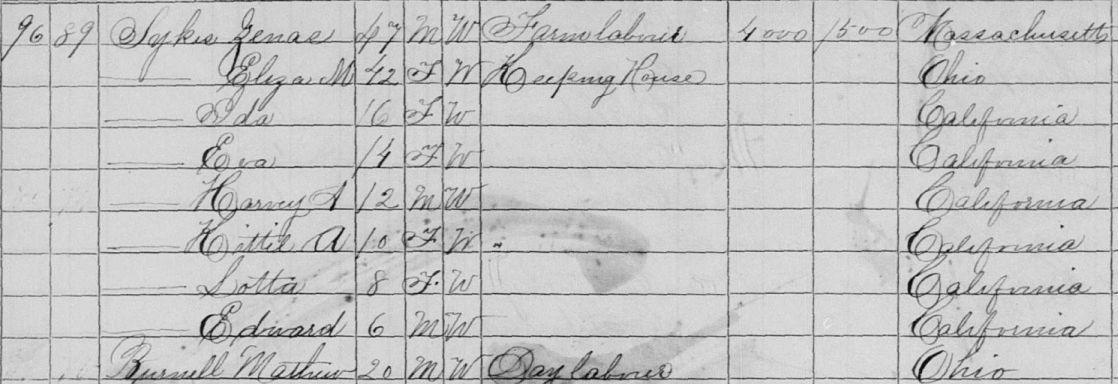
Zenas' eldest daughter, Ida, married Thomas Duncan on 3 April 1871 in Santa Clara. I don't know if Zenas remained in order to 'give away' his daughter, but it would make sense that he did. Ida and Thomas did later come down to Bernardo, staying until about 1876.
[footnote] "41. Deed Book 28, San Diego County Recorder's Office (1874), 259. In this transaction Ida is referred to as Ida Adelphine Duncan. Her husband, Thomas Duncan, was secretary of the Bernardo Grange. Carr, Patrons of Husbandry, p. 217." - from "The Sikes of Bernardo: A Case Study of Pioneer Farmers and Agricultural Community Development in Late Nineteenth-Century Southern California" by Stephen R. Van Wormer and Susan D. Walter [see the link above]Note that Zenas gave Ida and her husband 160 acres of his tract in September 1874. Ida deeded this land back to Zenas in 1876 which may indicate the year when the Duncans moved to San Francisco.
There is no evidence for when Zenas and his family moved to San Diego county nor when their adobe was first built. The first evidence for Zenas in San Diego county, barring his visit via ship in 1869, is in 1872, when he registered to vote and was noted to be the postmaster of Bernardo.
- Zenas Sikes, a 39 year old farmer of San Pascual post office, was listed in the California Great Register of voters with a date of registration of 30 October 1872.
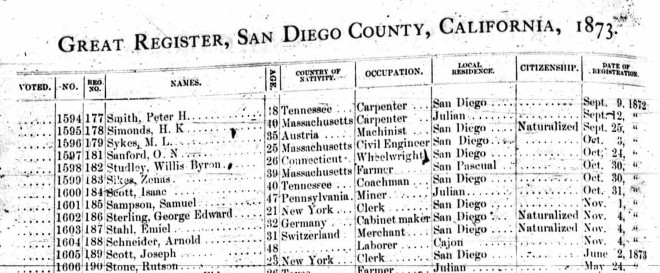
In a biography of Kate Sikes Cravath it was said that,
"Her parents were Zenis and Elizabeth Sikes and her father owned 2,200 acres of the Bernardo ranch in San Diego County, which he purchased after he had come from Santa Clara in 1872." - from the "History of Orange County, California" by Samuel Armor, 1921I believe biographies of this sort were based on the subject's recollections, so in this instance Kate is telling us the family came to Bernardo in 1872.
The following reports the sale of Zenas' property in Santa Clara midyear in 1872.
"Zenas Sikes to John M. Swinford, guardian of Kifer Minors, of part of lot 3, B 21, R2W town of Santa Clara, for $3,000. Zenas Sikes to J.M. Swinford of part of lot 3, B2, R2 W, town of Santa Clara, for $1,600." - from the San Jose Mercury News of 2 July 1872However, Zenas also bought property in Santa Clara in 1873, see below.
The Sikes had six children, two of whom, Lottie and Edward, were still in school when the family arrived in San Diego.
The first part of the Sikes home to be built was the one room adobe. This form of construction was common in the west and provided quick, cheap accomodation. This house was sited just west of the Kit Carson creek, above its juncture with the San Dieguito river.
The following is from a River Park publication, Riverscape, of the Fall 2003.
"A number of interesting discoveries have been made during the reconstruction process. For example, we learned that the adobe's original floor was earthen. Historians Stephen Van Wormer and Susan Walter found that the family dug about a foot deep down to the clay layer, then smoothed it out and spread a mud plaster on it. They later added a wood floor, but only the joists of that original floor remain."During restoration evidence was also found that the ceiling had been made of canvas, a Spanish colonial style known as a manta de cielo, or 'blanket of sky.' At some point lean-to porches were added to the east and west, shading the house, and there is evidence of a beaten earth floor to the south. This may have been a ramada, or open-air kitchen.
The Sikes' adobe is atypical. The adobe walls are not as thick as usual, being only of a single wythe vice the double wythe of the Spanish and Mexican periods. They were, therefore, weaker. The lowest layer of bricks are laid directly on the ground without any kind of foundation. Usually an adobe is built on a shallow trough filled with rock. This is done to keep the adobe away from contact with the earth from which it might otherwise wick moisture which would cause the adobe to decompose. Also, adobe brick is usually laid brick-fashion, each course staggered from the last by a half a brick with this pattern continuing around the corner so that each wall supports the other. The walls of the Sikes adobe are each independent, with the corners not being interwoven. This may mean that the house was built by someone not familiar with standard practices. In the restoration of the home a concrete foundation was 'injected' below the adobe walls, and all four corners of the adobe were tied together.
| Adobe
Adobe, or mud brick, is an ancient form of construction. To make adobe, a pit is dug, then filled with sand, clay, straw or other vegetable matter, and water. After being thoroughly mixed, it is poured into wood frames and left to dry. This can take up to 3 weeks. The resultant material is relatively weak when compared with fired brick so adobe walls are thick to enable them to support the weight of the roof and the wall above them.  To build a wall, a shallow trench was built around the perimeter of the proposed house. This was then filled with rock upon which the adobe was laid. This rock layer kept the adobe up, off the ground, to shield it from moisture wicking up from the soil. The mortar was made of fresh adobe 'mud,' as was the plastering which was used if a smooth finish for the wall was desired. Because of the weakness of adobe, the roof of the house was kept as light as possible, often using thatch. If the building was painted, a white wash was normally used. This 'poor man's' paint was made of a mixture of lime and water. When it was applied it was relatively clear, but dried to a white finish as the wash interacted with carbon dioxide in the atmosphere. Adobe had a reputation of being a poor man's material, so often, as the owner became more prosperous, the adobe walls would be hidden behind wood siding. |
A few years after the adobe was built a 'Greek Revival' style wood-frame structure was added south of the ramada. This unit appears to have been built elsewhere, then moved to the site and set upon boulders, at each corner, as a foundation. Originally this consisted of two bedrooms and a large sitting room.
At about this same time a wooden floor was installed in the old adode. This was done by laying large stones on the original dirt surface and laying joints across them; three stones to each joist. Floorboards were then nailed to the joists to create a relatively flat surface, see below. The lateral pipe shown is a 20th century addition.

Later, the area between the adobe and wood-frame structures was enclosed and used as a dining room. Based on letters written by Eliza, we know that the farmhouse reached its final outer dimensions by 1881.
The Sikes, the first to plow this land, farmed winter wheat. During initial settlement, pioneer farmers needed a product that could be quickly and cheaply produced. Grains could be planted quickly with little initial investment and offered a quick cash return at the end of the season. Wheat was first planted on a large scale in the Central Valley during the late 1860s. It became the largest and most profitable crop in California between 1860 and 1893.

Winter wheat is usually planted in the fall to be harvested in early summer. This form of dryland farming is particularly well suited to San Diego with its cool, wet winters. In 1872 Zenas had 500 acres of wheat under cultivation. In 1877 he was reported to be averaging 12 bushels of wheat per acre on 900 acres of land. In 1880 Zenas sent 50 tons of wheat down to San Diego. The wheat boom in California ended due to soil exhaustion and falling prices.
The Sikes subsequently planted peach orchards and grape vines on the hillsides, unsuccessfully attempted sugar cane, raised hogs and then started a dairy.

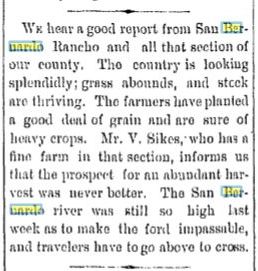

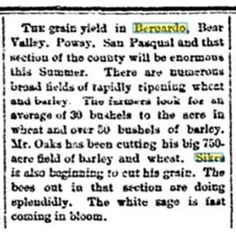
While living in Bernardo Zenas continued to buy and sell property in Santa Clara county.
"Elizabeth F Kifer to Z. Sikes--Undivided 1-6 of lot 2, B 4 N, Santa Clara, for $175." - from the San Jose Mercury-News of 28 December 1873
| The Town of Bernardo
The official founding of the community of Bernardo occurred on 3 December 1872 when a post office was established at the Sikes Farmstead with Zenas Sikes as postmaster. "By 1872, with all the subdividing of San Bernardo going on, there were enough settlers in the area to require tri-weekly mail delivery and the establishment of a fourth-class post office which was given the name "Bernardo." . . . Within a few years [i.e., c1875] Sikes sold two acres of rancho land just southeast of his home to Patrick Graham. Graham erected a building on the property and opened a general store in partnership with Joseph Nugent. The post office was soon relocated from the Sikes house to the general store. A blacksmith shop soon went up near the store. Other businesses followed, forming a village to serve the growing population of farmers and ranchers in the vicinity." - from the Rancho Bernardo Historical SocietyThe town of Bernardo was located at the base of Mule Hill. It was about 2,000 feet east of the Sikes' farmhouse, on the westward side of the Historic Inland Trail, the road from San Diego to San Pasqual & Yuma. Bernardo had a half-dozen buildings that included Patrick Graham's general store, Bill Ober's blacksmith shop, a school, and a Grange Hall built in 1875. The town was the center of a farming community of about 400 people. The establishment of Escondido in the late 1880s caused the gradual decline of the town though it survived until the construction of the Lake Hodges Dam in 1918. In 1882 the author Helen Hunt Jackson, the author of the novel "Ramona," visited the general store in Bernardo while researching her book. 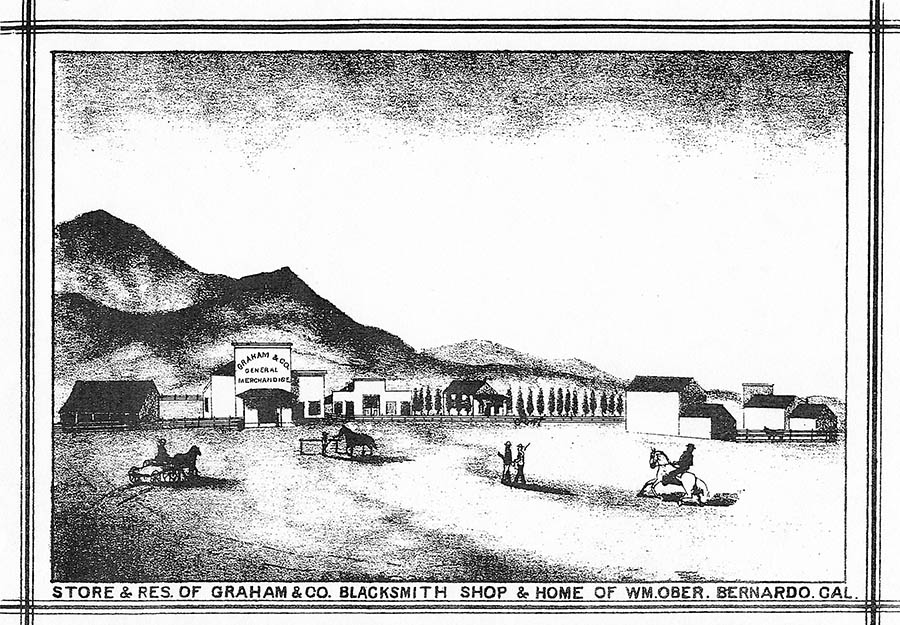 |
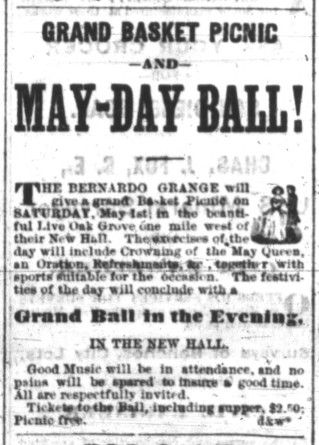
Zenas organized the Bernardo Grange, a local chapter of a national fraternal association of farmers, in November 1874 and was its first master. The Grange was also important in the social life of the community, bringing people together for picnics and dances. Its meeting hall was in the town of Bernardo.
"San Bernardo Grange, No. 239. San Bernardo, San Diego County. Organized November 28, 1874 . . . Z. Sikes, Master" - from "The Patrons of Husbandry" by Ezra Slocum Carr
"Bernardo grange will give a grand basket picnic and May Day ball Saturday May 1st; the picnic will be in the live oak grove one mile west of their new hall; the ball in the evening will be in the new hall." - from the San Diego Union of April 1875
"New Years Day on the San Bernardo was celebrated by a public installation of the officers elect of the Bernardo Grange. The ceremony took place in the Hall of the Grange, which was tastefully decorated for the occasion . . . The retiring Worthy Master, Mr. Z. Sikes, and his wife, had a pleasant surprise for the Patrons and visitors, in the shape of a splendid supper. The amiable hostess did the honors in a most delightful way, making everyone feel perfectly happy. After supper the band struck up, and the sturdy Grangers and fair sisters tripped the 'light fantastic' till early morning." - from the San Diego Union and Daily Bee of 7 January 1876
It seems Rancho San Bernardo investors believed there would be a Los Angeles to San Diego Railroad put through Bernardo. The following is the voice of the Grange Master at Bernardo who held out hope for a rail line thru Bernardo:

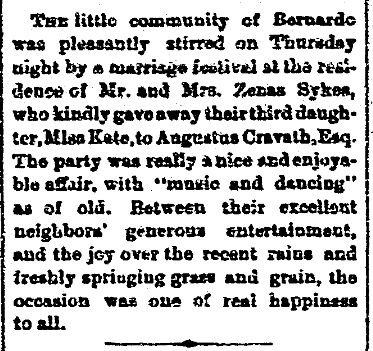
The Sikes children soon began moving out on their own. Ida had married Thomas Duncan in 1871. On October 10, 1876, Eva married James E. Casaday in the Sikes' farmhouse at Bernardo. Kate wed Augustus Cravath; see the announcement, to the left, in the San Diego Union of 23 December 1877. In February 1878 Harry married Tillie Bevington. Lottie married G.E. Gabrielson in March 1885, the third wedding in the Sikes' farmhouse. As the family broke up into smaller units, the farm was redistributed, Zenas giving each child a 160-acre tract. Ida and Thomas Duncan received their tract in September 1874 and deeded it back to Zenas in June 1876 when the couple moved out of San Diego county. On 5 March 1878 Zenas conveyed the same 160 acres to Eva and Richard Cassidy and another 160 acres to Harry Sikes. I assume Kate and Augustus Cravath also received a share because Zenas stopped at the 'Cravath's place' in November 1879.
Zenas and Eliza Sikes made trips to and from San Francisco in 1875 and 1876.
"Following is the passenger list of the Orizaba: . . . Z. Sikes [also listed as carrying freight]" - from the San Diego Union and Daily Bee of 13 November 1875This may have been a 'family' trip. Zenas' two brothers, Loren and Charles, still lived in Santa Clara county, at the bottom of San Francisco Bay, and Eliza's father, Lyman Burrell, lived in the nearby Santa Cruz mountains.
"San Francisco. Passengers per Steamer "Orizaba." The steamer Orizaba sailed yesterday with the following named passengers for San Diego: . . . Z. Sikes, Mrs. Sikes . . ." - from the San Diego Union and Daily Bee of 25 April 1876
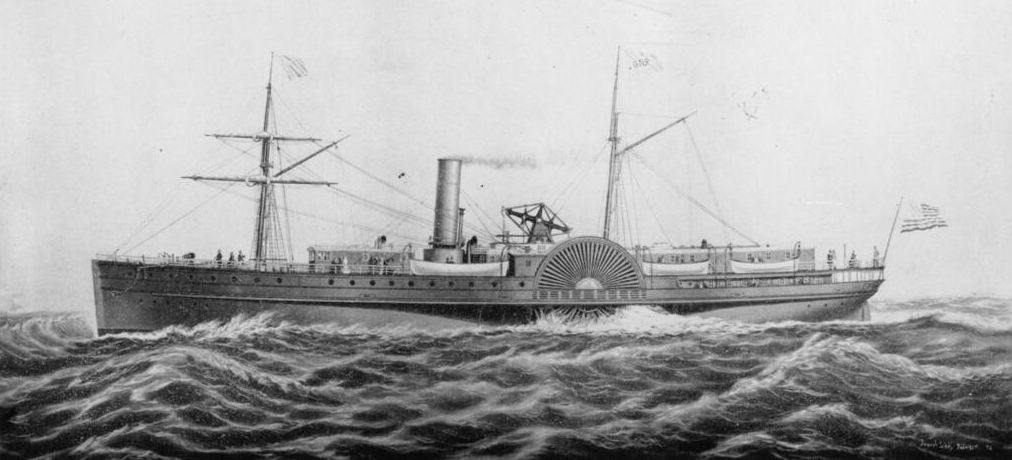
The ORIZABA was a mainstay of coastal ship traffic, making the run from San Francisco to San Diego, a 3-day voyage, starting in 1865 and continuing until 1887. For most of her life Henry James Johnston was her captain.
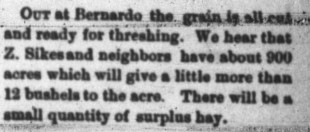 Farming continued to be good in 1877, see article to the left from the San Diego Union and Daily Bee of 26 June 1877.
Farming continued to be good in 1877, see article to the left from the San Diego Union and Daily Bee of 26 June 1877.
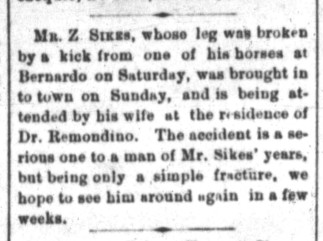
In November 1879 Zenas and Eliza were visiting their daughter Kate. While hitching the team to the wagon, a 'vicious horse' kicked Zenas and broke his leg below the knee. It would take over a year for him to fully recover. For much of this period he lived down in San Diego with his doctor, Peter C. Remondino. The doctor had a house on Cortez Hill, just north of where the Hotel Cortez is today.
| Peter Charles Remondino
The doctor was vice-president of the State Medical Society, president of the Southern California Medical Society, and president of The San Diego County Medical Society, while he served two terms, eight years in all, as a member of the State Board of Health, and for thirty-five years was a member of the Board of the U. S. Pension Examiners. For twelve years he occupied the Chair of the History of Medicine and of Medical Bibliography in the Medical Department of the University of Southern California, in the College of Physicians and Surgeons, in Los Angeles. He built a home on Cortez Hill at the northeast corner of Fifth Avenue and Beech Street, one block north of the current El Cortez Hotel. His private library numbered over 15,000 volumes, including 3,000 medical books. These were stored in floor to ceiling bookshelves through several rooms. Peter Charles Remondino died in San Diego on December 10, 1926. See also Peter C. Remondino, MD: The Man and His Library. |
In the 1880 census of Bernardo, California as Zenas Sikes, a 47 year old farmer. Living with him were his wife, Eliza, 45, and children Charlotte, 16, and Edward, 12. There was also a laborer on the farm, Edwin M. Woodson, 21.



Zenas Sikes, 50, of Bernardo post office is also on the 1880 voter registration list. His son, Harry Sikes, a 21 year old farmer, is also listed.
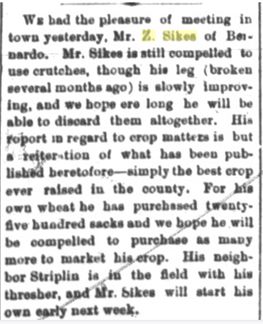 The San Diego Union and Daily Bee of 29 June 1880 reported that Zenas, while still on crutches, was recovering from his broken leg. The prospects for his farm looked excellent as well.
The San Diego Union and Daily Bee of 29 June 1880 reported that Zenas, while still on crutches, was recovering from his broken leg. The prospects for his farm looked excellent as well.
 Zenas had recovered the use of his leg by the end of 1880. However, on 13 January 1881 a team of horses "went wild" and trampled him, re-breaking the leg. This wound would not heal and the bone became infected. Zenas was told that this condition was terminal. He requested, as a last resort, that his leg be amputated. The operation was performed in Zenas' bedroom at the Sikes' home.
Zenas had recovered the use of his leg by the end of 1880. However, on 13 January 1881 a team of horses "went wild" and trampled him, re-breaking the leg. This wound would not heal and the bone became infected. Zenas was told that this condition was terminal. He requested, as a last resort, that his leg be amputated. The operation was performed in Zenas' bedroom at the Sikes' home.
"Having settled his business affairs, and taken farewell to his family, he submitted himself calmly to the operation . . . Although he suffered no loss of blood, the result was as feared; he sank rapidly from exhaustion, and died in about half an hour." - from the San Diego Union of 5 April 1881 (see full article to the right)Zenas died on 2 April 1881, at the age of 52. He was a member of the Independent Order of Odd Fellows and his funeral was grandly hosted by them. The event commenced at the Odd Fellows Hall, downtown, where funeral services were held, and then the Brothers of the Lodage proceeded en masse to the Mount Hope cemetery, accompanied by the Harmony Brass Band. Zenas was buried in the Odd Fellows section.
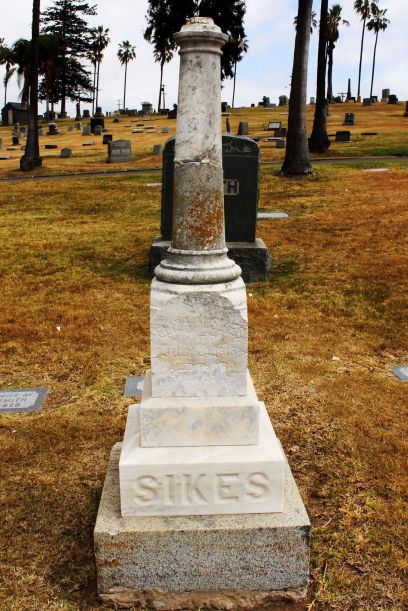
"Zenas Sikes' obituary says that he and his wife Eliza moved to Santa Clara from Ohio in a covered wagon after they married in 1853. However, research indicates that Eliza, who was born in Ohio, moved to California with her stepmother Clarissa Burrell and arrived in January 1853. They came west around Cape Horn on the ship "Westward Ho" to join her stepfather Lyman Burrell, who had come west overland in 1849 to become a gold miner. The Sykes (Sikes) family has been documented back to Massachusetts in the 1600s, but they had moved to Michigan by 1837. Zenas appears to have left Michigan in March 1850 with three brothers, arriving in California five months later. Census records of 1852 list Zenas and his brothers Charles, Loring, and Samuel as living in Santa Clara County, California. In July 1853, Zenas and Eliza married in California. In 1868, they purchased a 2,400 acre portion of the former Rancho San Bernardo for $2,500. With their six children, they moved on their property by 1872, and built a one-room adobe structure to live in. Additional rooms in the Greek revival style, popular during the Victorian era, were soon added to the one room structure. These additions were of wood, not adobe. Based on letters written by Eliza, we know that the farmhouse reached its final outer dimensions by 1881. Zenas Sikes died in surgery in April 1881, as a result of being kicked by a horse on his leg twice. Eliza used the insurance payments in part to remodel the house extensively and to upgrade the furnishings. She also continued the wheat farming business. The family's fortunes slowly declined in the decade after Zenas' death. Wheat became less profitable as competition grew and the land became less fertile. The family began a dairy operation. Debts piled up and in 1897, the property was sold to August Barnett for $10 to pay off the mortgages he held on the property. In 1917, the house was purchased along with the buildings in the Bernardo community as part of the Lake Hodges Dam Project, initatied by Col. Ed Fletcher." - from the "History of the Sikes Adobe"Zenas' will:
Old Court, Vol 1 Box 26
San Bernardino County, California
Dated: September 25, 1879
Wife: Eliza M Sikes
Sons: Edward Z sikes (Minor); Zenas Sikes [?]; Harry Arthur Sikes
Daughters: Lottie E sikes (Minor); Ida Adelphia Duncan;
Eva Roselin Casady; Kate Isabella Kinoweth [Cravath]
Executors: Eliza M Sikes; Hiram C Morell, Santa Clara, Cal
Witnesses: J L Rowe; Will M Smith; San diego, Calif
Probated: May 23, 1881 (died about April 2, 1881)"
Zenas had a $6,000 insurance policy. Eliza used this to extensively remodel the house and to upgrade the furnishings. This included reconfiguring the interior of the house. The dining room was changed into a sitting room. The previous sitting room, in the wood-frame house, was changed into two bedrooms with a hall bisecting the structure and leading to a door to the south.
Eliza also continued the wheat farming business, her son and two sons-in-law variously managing the property for her. The family's fortunes slowly declined in the decade after Zenas' death. Wheat became less profitable as competition grew and the land became 'played-out.' Southern California's weather had been abnormally wet during the 1870s and into the 1880s. By 1890 it became apparent that grain could no longer be grown profitably without irrigation.
In November 1882 Eliza and Lottie moved to San Jose, leasing out the Bernardo farm to G.E. Gabrielson, whom Lottie would later marry. Eliza M. Sikes married Harry Maynard Magnes on 15 October 1884 in Sonoma county, California. The couple returned to Bernardo, but were divorced in 1885. Eliza left the farm in the late 1880's, residing with her children in San Diego and Escondido.
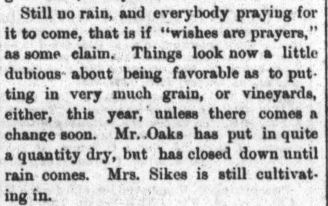 In the late 1880's the San Diego real estate market collapsed reducing overall economic activity. This was followed by a national depression in 1893 that lasted for 4 years. The local climate also began to get drier; see the San Diego Union article of 4 January 1882 to the left. I believe the phrase "cultivating in" means preparing the ground to plant using a plow. During this time the Sikes' farm transitioned from growing the now uneconomic wheat to become a dairy farm. Debts, however, began to pile up. Several mortgages were taken on the farm to keep things going, but in 1899 the property was sold to August Barnett for $10 to pay off the mortgages he held on the property.
In the late 1880's the San Diego real estate market collapsed reducing overall economic activity. This was followed by a national depression in 1893 that lasted for 4 years. The local climate also began to get drier; see the San Diego Union article of 4 January 1882 to the left. I believe the phrase "cultivating in" means preparing the ground to plant using a plow. During this time the Sikes' farm transitioned from growing the now uneconomic wheat to become a dairy farm. Debts, however, began to pile up. Several mortgages were taken on the farm to keep things going, but in 1899 the property was sold to August Barnett for $10 to pay off the mortgages he held on the property.
Early in the 20th century the Sikes house was modified again, adding bathrooms in the east and west porches, and knocking together the two east-side bedrooms into a single unit.
Zenas' brother, Loring W. Sikes, died in 1890 in Santa Clara, California.
In the 1900 census of Los Angeles, California as Eliza M. Sikes, a 64 year old widow, living with her son Edward Z. Sikes, a 26 year old electric railway motorman. Eliza's brother-in-law, Charles W. Sykes, was living with his son-in-law, Walter Enwright, in Fresno at this time.
In the 1910 census of Analy, Sonoma county, California as Eliza Sikes, a 75 year old widow, living with her son Edward Sikes, a 43 year old poultry farmer, and his wife, Emma, 35.
Eliza died on 24 July 1913 in Escondido while living with her son Edward. She was buried next to Zenas in the Mount Hope cemetery. Her obituary,
"Pioneer Dies At Escondido - Mrs. Eliza M. Sikes, Aged 79, Resident of San Diego County Since 1881 - Mrs. Eliza M. Sikes, aged 79, a member of the Pioneer Society of San Diego, died yesterday morning at the home of her son, Edward A. Sikes at Escondido, after a protracted illness. Mrs. Sikes had been a resident of San Diego county since 1881 and with Captain Sikes came to California in 1853. Born in Mobile, Ohio in 1834, she grew to young womanhood there and in 1853 was married to Captain Sikes. There honeymoon was passed in a prairie schooner bound for California. Mr. and Mrs. Sikes' first home in this state was at San Jose where they resided until 1873, when they moved to Bernardo and established the Sikes' ranch, which afterward became well known. In 1881, Captain Sikes died and Mrs. Sikes went to Los Angeles but shortly returned to Escondido and has lived with her children there and at San Diego since. Three daughters and two sons survive her - Mrs. Kate Kravath, Santa Ana; Mrs. G. E. Gabrielson, San Diego; Mrs. Eva Thompson, San Diego; Harry A. and Edward C. Sikes, Escondido. The members of the Pioneer Society will attend the services in a body. The funeral will be held from the chapel of Johnson, Connell and Saum at 10:30 o'clock, Saturday morning. The body will be interred beside that of her husband in Mount Hope Cemetery." - from "The San Diego Union" of 25 July 1913
In 1917, the house was purchased along with the buildings in the Bernardo community as part of the Lake Hodges Dam Project, initatied by Col. Ed Fletcher.
Zenas and Eliza's children were,
 (10) Ida Adelphine Sikes Duncan (1854) She was born on 15 August 1854 in Santa Clara. She married Thomas Duncan on 3 April 1871 in Santa Clara. I suspect Zenas delayed his departure to San Diego county in order to 'give away' his daughter. Thomas was born circa 1845 in England. Ida and Thomas did come down to Bernardo, receiving a 160 acre tract of land from Zenas in September 1874. Ida deeded this land back to Zenas in 1876 which may indicate the year when the Duncans moved to San Francisco. Ida died in 1912.
(10) Ida Adelphine Sikes Duncan (1854) She was born on 15 August 1854 in Santa Clara. She married Thomas Duncan on 3 April 1871 in Santa Clara. I suspect Zenas delayed his departure to San Diego county in order to 'give away' his daughter. Thomas was born circa 1845 in England. Ida and Thomas did come down to Bernardo, receiving a 160 acre tract of land from Zenas in September 1874. Ida deeded this land back to Zenas in 1876 which may indicate the year when the Duncans moved to San Francisco. Ida died in 1912.
[footnote] "41. Deed Book 28, San Diego County Recorder's Office (1874), 259. In this transaction Ida is referred to as Ida Adelphine Duncan. Her husband, Thomas Duncan, was secretary of the Bernardo Grange. Carr, Patrons of Husbandry, p. 217." - from The Journal of San Diego History, pg 65, "The Sikes of Bernardo: A Case Study of Pioneer Farmers and Agricultural Community Development in Late Nineteenth-Century Southern California" by Stephen R. Van Wormer and Susan D. WalterHer children were,
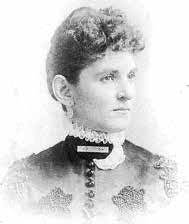 (10) Eva Rosalind Sikes Cassidy (1856); born 15 June 1856 in Santa Clara; married James Elliott Casady [Cassidy] in the Sikes' farmhouse at Bernardo, she later married William F. Thompson; died on 23 November 1930 in Oakland; her children were,
(10) Eva Rosalind Sikes Cassidy (1856); born 15 June 1856 in Santa Clara; married James Elliott Casady [Cassidy] in the Sikes' farmhouse at Bernardo, she later married William F. Thompson; died on 23 November 1930 in Oakland; her children were,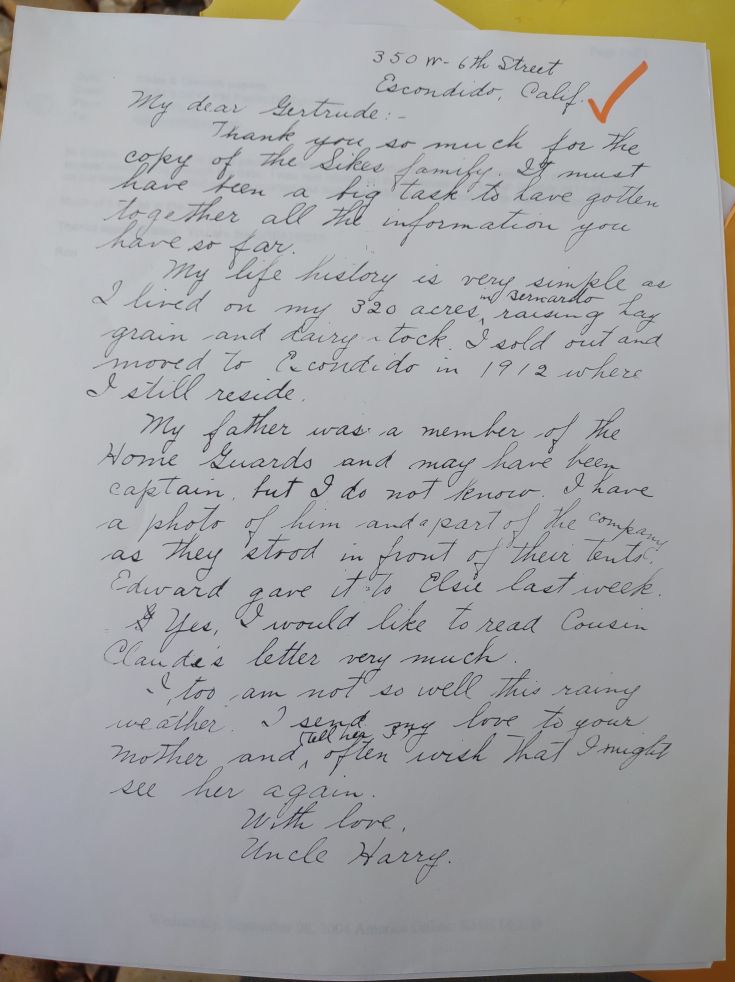
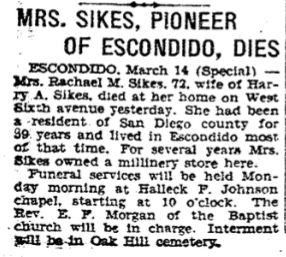
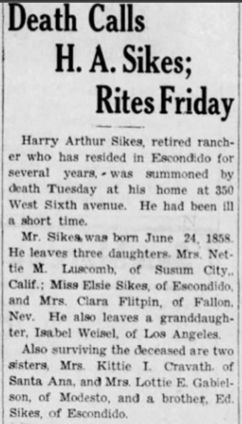
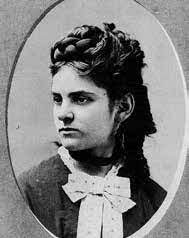 (10) Kate Isabella Sikes Cravath (1860) She was born on 30 October 1860 in Santa Clara county, California. She married Augustus Kossuth Cravath in January 1877 in the Sikes' farmhouse in Bernardo. Augustus, the son of Samuel Prosper Cravath and Catherine P. Freeman, was bon on 23 April 1851. He died in 1935. Kate died on 6 March 1952, at the age of 91, in Santa Ana, Orange county, California.
(10) Kate Isabella Sikes Cravath (1860) She was born on 30 October 1860 in Santa Clara county, California. She married Augustus Kossuth Cravath in January 1877 in the Sikes' farmhouse in Bernardo. Augustus, the son of Samuel Prosper Cravath and Catherine P. Freeman, was bon on 23 April 1851. He died in 1935. Kate died on 6 March 1952, at the age of 91, in Santa Ana, Orange county, California.
"Augustus K Cravath (1851-1935) was the son-in-law of Zenas and Eliza Sikes. Augustus came to California in the 1870's from the state of Iowa with his sister and brother-in-law, Charles Wattson and bought a farm in the Poway Valley. In December 1877, he married Kate Sikes, the fourth child of Zenas & Eliza and the newly weds settled in Poway. The family moved to Escondido in the 1880's. A.K. was on the Board of Directors of the Escondido bank on the corner of grand and Broadway (now the Jim Crone building) and was the first Mayor of Escondio in 1888. Cravath became the Asst. Mgr. of Escondido Land and Town Co, which operated San Diego Capital, the company that founded Escondido. He remained in that capacity for eight years and may be said to be the "father of Escondido." He built the first home and the first business block (at the corner of Grand and 'Lime' now Broadway) in Escondido. In 1892, he was appointed Sheriff of San Diego County to serve out the term of John L Polk who was removed from office. A.K. did not run for re-election as his business activities took most of his time. He moved his family to Santa Ana in 1899 and was a popular Deputy Sheriff of Orange County for many years. Clifford Carlton Cravath (1881-1963) was the grandson of Zenas & Eliza Sikes and the son of Augustus and Kate Cravath. "Gavy" was born in Poway, but moved to Escondido with his family in 1886 and graduated from Escondido High School in 1899, where he had played both football and baseball. His best sport was baseball and he became an all star in the minor leagues playing with the Los Angeles Angles of the old Pacific Coast League. He was unsuccessful in tryouts with three American League teams in 1908-1909 and returned to the minor leagues. However, he finally made it the "Majors" in 1912 with the Philadelphia Phillies of the National League in 1912 at the age of 31, and what a prize he was. In nine seasons with the Phillies, he led the National league in home runs six times and runs batted in twice. In 1915, his 24 home runs and 115 runs batted in led the Phils to their first pennant. When he retired in 1920, Gavys career 119 home runs was the all time record, but was soon broken by Babe Ruth. When "Gavy" retired from basebal,l he moved with his wife and two daughters to Laguna Beach, California. Gavy was elected as Justice of the Peace in the middle 1920 as he liked to tell his friends "by accident." The story goes that he and two of his friends didn't like the then judge and drew straws to see who would run against him. "I got the short straw," Cravath used to say. He went on to be elected and served for 36 years until death in 1963. Although Cravath was one of the last of the men to serve without formal training, he was reversed only twice in 36 years on the bench! An example of Cravath's way of handling cases is shown in the story of two young men put before him on charges of robbery. They asked for probation on the condition that one join the Army and one the Navy. (This was during WW II). Said Cravath, "When I see a man in uniform walking down the street, I look at him in pride. You haven't earned the right to wear such a uniform bearing the honor of our country. Six months in jail to the both of you!" - by Ron Hall, docent at the Sikes AdobeTheir children were,
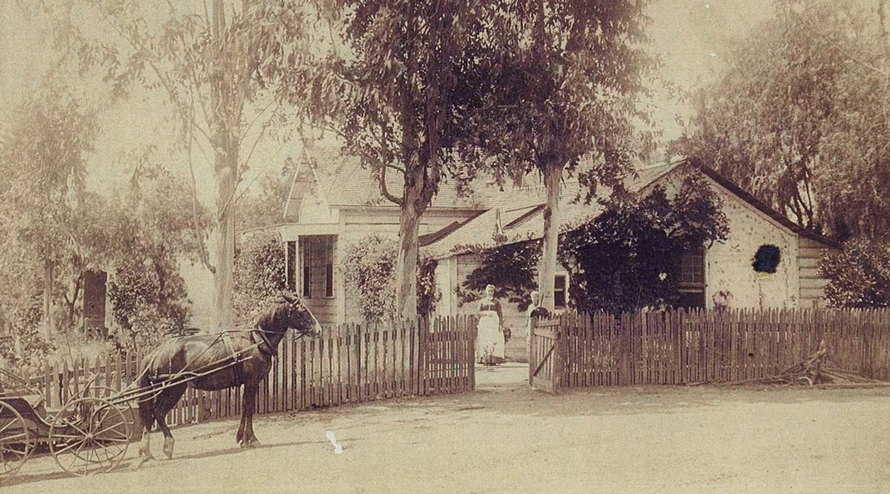

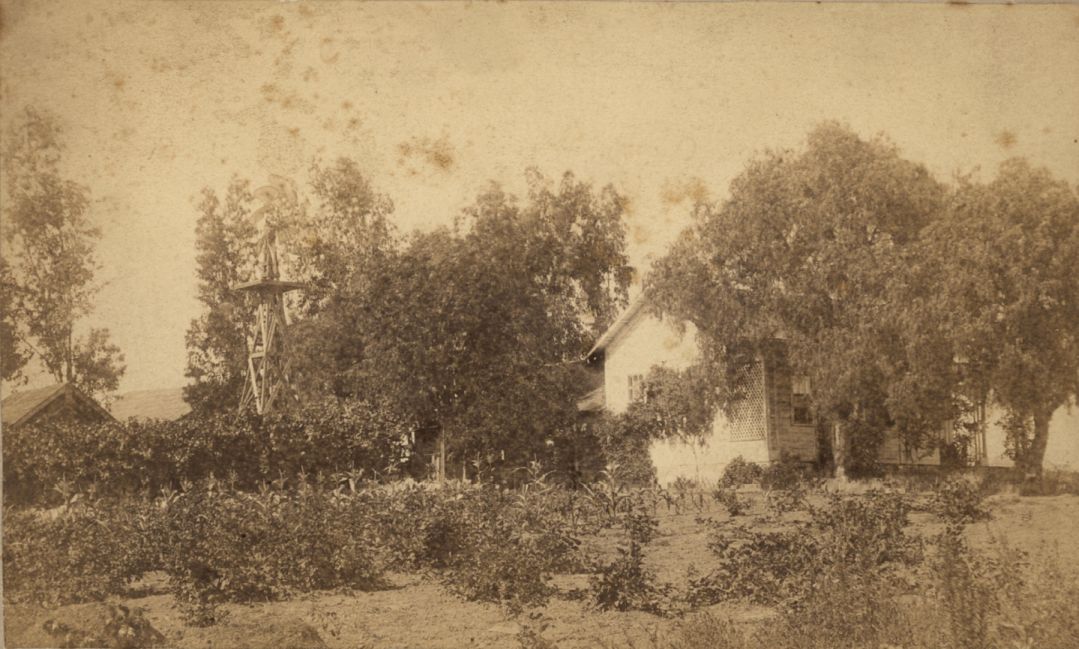
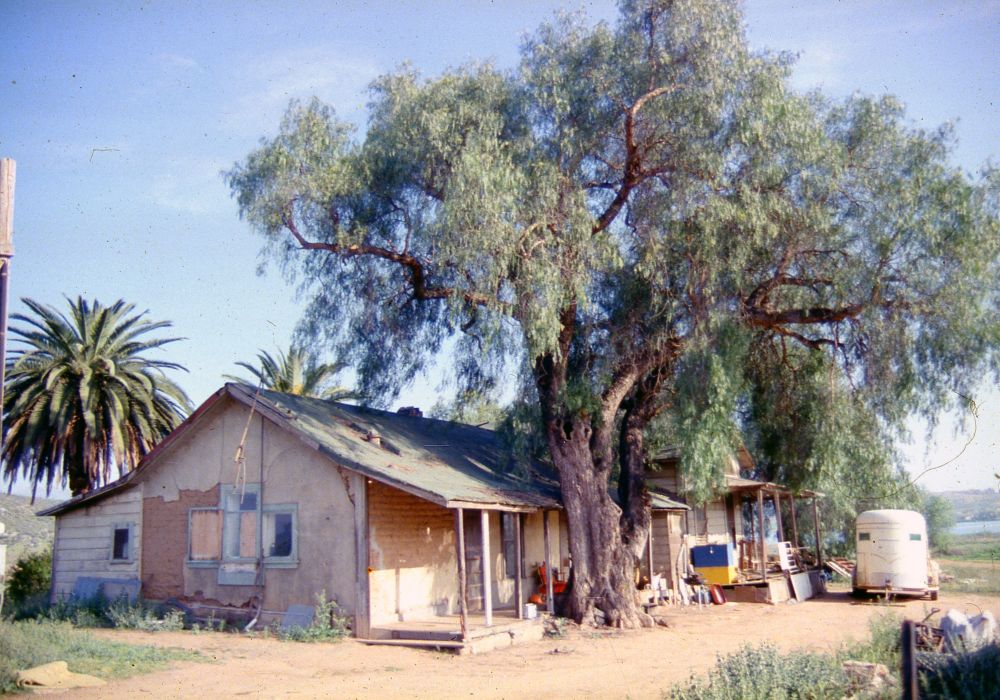
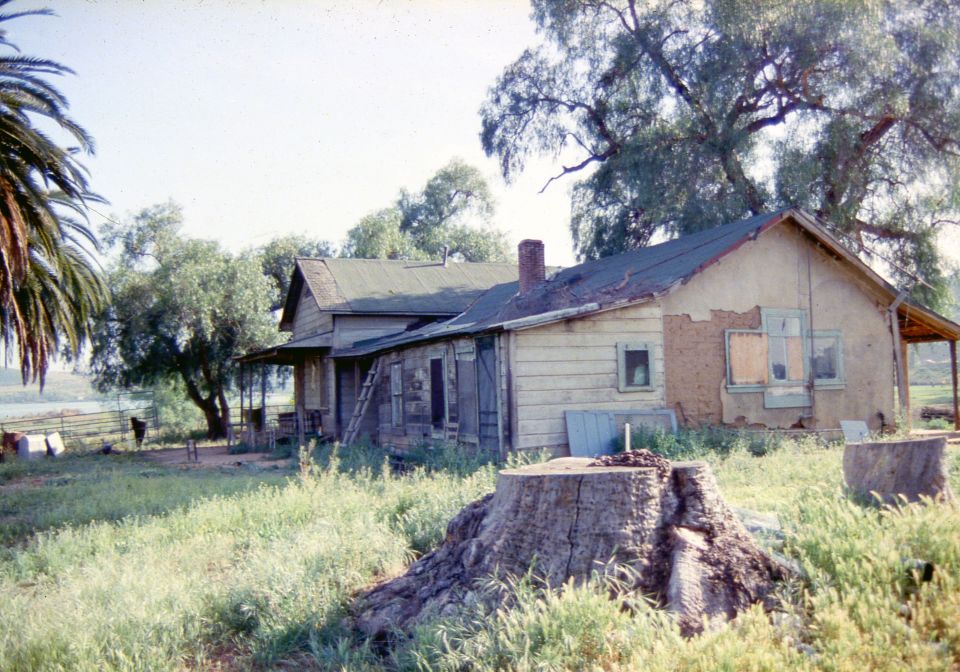

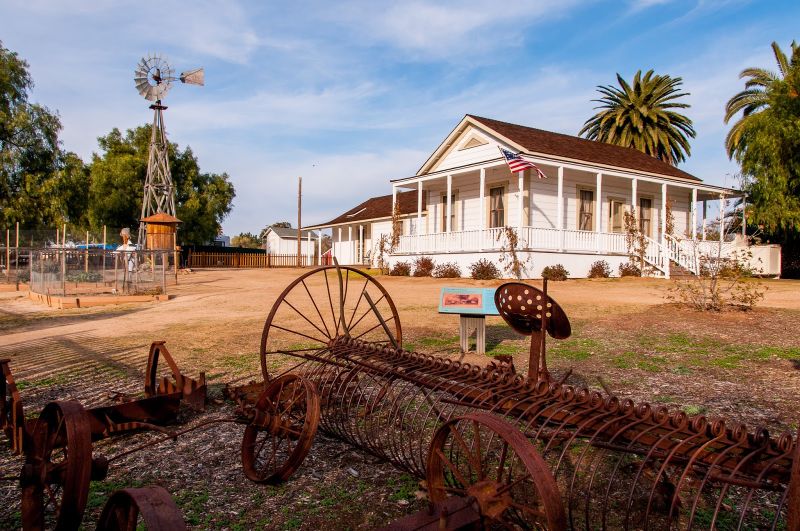
He was born on 23 March 1815 in Westhampton, Massachusetts. He first married Ann Elizabeth George on 8 January 1846. In the 1860 census of Keeler, Van Buren county, Michigan as O. M. Sikes, a 44 year old lumberman. Living with him were his wife, A.E., 34, and children, William A., 12, Lucina E., 11. Second he married Susan Parmalee Emmons [her second marriage?] on 26 January 1871. He died 19 November 1895 in Keeler, Michigan. His children were,
- (10) William A. Sikes (1848), died unmarried on 11 April 1909 in Keeler, Michigan
- (10) Lucina E. Sikes (1849), married a Hurlburt, died 20 October 1930 in Paw Paw, Michigan
- (10) Kate Isabel Sikes (1852), she died in 1860
- (10) Leo S. Sikes (1872), no known wife or children
- (10) Lyman M. Sikes (1872), he married Edna O. Clifton on 28 August 1901, died 3 October 1939 in Chicago
-- (11) Loura June Sikes (1903)
-- (11) Clifton Montague Sikes (1906)
Loring was born in 1819 [his tombstone shows 1816] in Westhampton, Massachusetts to Zenas Sikes Sr. and Nancy Janes. He moved to Michigan in 1837 with the rest of his family. On 26 April 1846 Loring W. Sikes, 27, married Emmer Daniel, 17, in Cass county, Michigan.
In 1850 Loring (with his wife?) and three of his brothers, Samuel, Zenas, and Charles, drove 2 wagons and 5 yoke of oxen from Michigan to Sacramento, California, the trip taking 5 months.
In the 1852 census of Santa Clara county, California as Loring Sikes, with Emma, his wife, and Charles D., his son. Also living in Santa Clara county were his brothers, Zenas, Samuel, and Charles L. M.
In the 1860 cenus of Redwood township, Santa Clara county California as Loring Sikes, 39. Living with him were his wife, Emma, 27, and son, Chas. D., 13, of Michigan.
In the 1870 census of Santa Clara township, Santa Clara county, California as Loran W. Sykes, a farm laborer with real estate worth $3,000. Living with him were his wife, Emma, 38, and son, Charles D., 23.
In the 1880 cenus of Santa Clara county, California as W. Loren Sykes, a 63 year old mail carrier. Living with him were his wife, Emma, 50, and son, D. Charles, 35, of Michigan.
Loring W. Sikes died on 31 January 1890 [1892] in Santa Clara, California under peculiar circumstances.
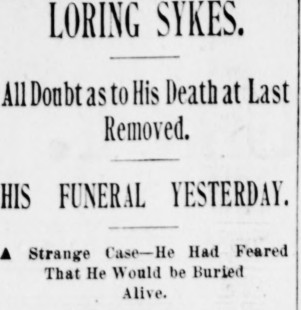

Lucinda was born in Westhampton, Massachusetts on 1 August 1820. She married John Gibbon Ackley Barney on 26 April 1841, in Cass, Michigan. They had two daughters, Jane and Clara. Lucinda died in Keeler, Michigan on 4 February 1848, at the age of 27.
(9) Pliny Parsons Sikes (1824)Pliny was born on 21 September 18234 [1824 per gravestone] in Westhampton, Massachusetts. He married Elma Ann Terry about 1853, in Keeler, Van Buren, Michigan, United States. He lived in Keeler, Van Buren, Michigan, United States during the 1860, 1870 and 1880 census. He died on 8 August 1907, in Benton Harbor, Berrien county, Michigan, United States, at the age of 83, and was buried in Keeler Cemetery, Keeler, Van Buren, Michigan, United States.
His children were,
- (10) Mabel Sikes (1858)
- (10) Clarence T. Sikes (1859), died 21 September 1886 in Keeler, Michigan, no known wife or children
- (10) Mildred E. Sikes (1863), born 25 December 1863, married Roll F. Clover 25 November 1885, died 11 June 1901
- (10) Claude Pliny Sikes (1869), born 17 October 1869, married Mary Calista Adams 25 August 1898, died 16 October 1949 in Benton Harbor, Michigan
-- (11) Marian Ruth Sikes (1900)
-- (11) Louise Sikes (1907)
-- (11) Wayne Sikes (1910), married Lucille Whitney on 13 December 1940, no known children
-- (11) Jane Sikes (1915)
- (10) Carlton Zenas Sikes (1874), born 22 February 1876, married Matilda Evelyn Davies 31 January 1903, second married Lydia Sara Warman 14 July 1931, died 1 January 1939
-- (11) Mildred E. Sikes (1906)
He was born on 15 August 1825 in Westhampton, Massachusetts. He came to California in 1850 with Zenas, Charles and Loring. In the 1852 census of Santa Clara county, California as Samuel Sykes, a 28 year old farmer. Soon after he returned to Michigan by way of Nicarauga, a convenient place to cross the isthmus of Panama.
Upon returning to Michigan Samuel married Lucinda G. Salisbury [Saulsbery] on 19 June 1858 [1859?]. In the 1860 census of Keeler, Van Buren county, Michigan as S. J. Sikes, a 34 year old farmer. Living with him was his wife, L. G., 23. His father, Zenas Sikes Sr., and elder brother, Orendo, are on the same page of the census. Samuel seems to have been living with his Salisbury in-laws, E.G. and Abigail Salisbury.
During the Civil War, from 1861 to 1865, Samuel served as a Private in the 3rd Regiment of Michigan Infantry.
In the 1870 census of Keeler, Michigan as Samuel Sykes. Living with his was his wife, Lucinda, 32, and children, Arlie [E], a girl, 10, Allison [Janes], a boy, 8, and Burt, 5. In the 1880 census of Keeler, Michigan as Samuel Sykes. Living with his was his wife, Lucinda, 42, and children, Arlie, 20, Allison, 16, and Bell, 3. Burt apparently died young.
Samuel died on 21 March 1888 in Keeler, Michigan. His children were,
- (10) Arlie Sikes (1861), died in 1930
- (10) Allison Janes Sikes (1862), born 29 July 1862, married Elizabeth E. Irish on 8 September 1897, died 1 December 1933
-- (11) Ward Samuel Sikes (1899)
-- (11) Lisle S. Sikes (1907), born 8 April 1907, married Norma Bertha Rhode 2 May 1931, died 11 October 1968
--- (12) Jeanette E. Sikes (1932), married a Schroeder
- (10) Burt "Bertie" L. Sikes (1865), died 4 August 1870
- (10) C. Belle Sikes (1876), died 14 February 1905
Charles was born on 30 January 1830 in Westhampton, Massachusetts to Zenas Sikes Sr. and Nancy Janes. He moved to Michigan in 1837 with the rest of his family. In the 1850 census Keeler, Van Buren county, Michigan as Charles L. Sikes, a 20 year old laborer, living with his parents, Zenas Sr., 58, and Nancy, 59. The census was taken in September 1850. I don't see any of the other brothers in this census.
In about 1850 Charles and three of his brothers, Samuel, Zenas, and Loring, drove 2 wagons and 5 yoke of oxen from Michigan to Sacramento, California, the trip taking 5 months.
In the 1852 census of Santa Clara county, California as Charles L. W. Sykes, 21, of Massachusetts. Also living in Santa Clara county were his brothers, Zenas, Samuel, and Loring with Emma, his wife, and Charles D., his son.
Charles married Louisa Harker on 1 May 1857 in Santa Clara, California.
In the 1860 cenus of Fremont township, Santa Clara county California as Charles Sikes, a 30 year old farmer, of Massachusetts. Living with him was his wife, Louisa, 18, of New York. He was living 'next-door' to his brother Zenas.
Private Charles Sykes, possibly Zenas' brother, was in Company F, of the 7th Infantry Regiment of the California Militia during the Civil War. This may actually be a Charles K. Sykes.
In the California Great Register of 1867 as Charles Lonson Wells Sikes, a 37 year old brakeman, of Massachusetts, living in San Jose, Santa Clara county, California. A brakeman works on a train, assisting in braking the train by applying the brake on an individual car or wagon of the train. He registered to vote on 2 August 1867.
In the 1870 census of San Jose, Santa Clara county, California as Charles Sykes, a 37 year old hack driver with no real estate. A hack was a horse drawn cart for hire, much like a hack driver today is a cabbie. Living with him was his wife, Louisa, 27, of New York, and children, Millie, 9, Clara B., 7, and William, 5.
In the California Great Register of 1871 as Charles L. W. Sikes, a 41 year old hack driver, of Massachusetts, living in San Jose, Santa Clara county, California.
On 15 March 1872 Charles Sykes of Santa Clara had his 'wife,' Hattie Burnett, brought up on a writ of habeas corpus. What happened to Louisa and his children? He alleged that Hattie was prevented by force from consorting with him. Hattie denied that they had been married and that she was under no restraint. The writ was denied.
In 1875 Charles was a supervisor with the Santa Cruz stage. In 1877 he started the San Jose Baggage and Transfer company. In 1880 he was back to driving hacks. The latter was probably due to the arrival of the railroad in that year which resulted in the collapse of the local stage coach lines."In the Police Court to-day, Charles Sikes was arraigned on a charge of misdemeanor in running into a hack. He pleaded not guilty and his trial was set for Tuesday next at 2 P.M." - from the San Jose Herald of 19 August 1880.
In the 1880 census of Santa Clara county, California as Charles W. [Wells] Sikes, a 47 year old hack driver, of New York [it looks like this was written in later, in pencil, making the assumption that the wife's origin was the same as her husbands]. Living with him were his wife, Louise, 38, and children, Millie, 19, Clarra Belle, 17, and Willie, 15. Another hack driver and a hostler, servants of Charles, were living there also. A hostler tends horses.
The following newspaper articles are dated 4 November 1880, 17 May 1881
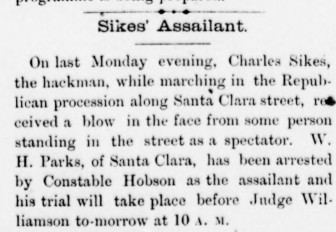

In the 1900 census of Fresno, California as Charles W. Sykes, 68, of Massachusetts. He was living with his son-in-law, Samuel J. Hunter, and his daughter, Nellie E. Hunter [Sykes], 40. Louise apparently had died, though Charles is not called a widower.
Charles died at an unknown date after June 1900, when the census was compiled, and probably in Fresno. Hattie died in 1905.
- (10) Millie "Nellie" Louise Sikes (1860), she married Walter James and one a son,John was born on 12 January 1835 in Westhampton, Massachusetts. As far as I know, he did not marry and had no children. He was a miner in Virginia, Placer county, California. He died on 12 January 1935 in Greensburg, Pennsylvania - from the Pittsburgh Post-Gazette of 15 Janaury 1935. There is a gravestone in Keeler, Michigan for "John T. son of [Z?] & N.J. Sikes."